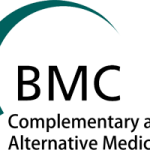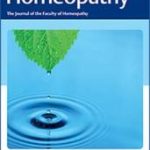Trine Stub, Terje Alræk and Anita Salamonsen
The Red flag! risk assessment among medical homeopaths in Norway: a qualitative study
BMC Compl Alt Med, 2012, 12 (150)

Background – Homeopathy is widely used, and many European physicians practice homeopathy in addition to conventional medicine. Adverse effects in homeopathy are not expected by homeopaths due to the negligible quantities of active substances in a remedy. However, we questioned if homeopathic aggravation, which is described as a temporary worsening of existing symptoms following a correct homeopathic remedy, should be regarded as adverse effects or ruled out as desirable events of the treatment. In order to improve knowledge in an unexplored area of patient safety, we explored how medical homeopath discriminate between homeopathic aggravations and adverse effects, and how they assessed patient safety in medical practice. Method – A qualitative approach was employed using focus group interviews. Two interviews with seven medical homeopaths were performed in Oslo, Norway. The participants practiced homeopathy besides conventional medicine. Qualitative content analysis was used to analyze the text data. The codes were defined before and during the data analysis. Results – According to the medical homeopaths, a feeling of well-being may be a criterion to distinguish homeopathic aggravations from adverse effects. There was disagreement among the participants whether or not homeopathic treatment produced adverse effects. However, they agreed when an incorrect remedy was administrated, it may create a disruption or suppressive reaction in the patient. This was not perceived as adverse effects but a possibility to prescribe a new remedy as new symptoms emerge. This study revealed several advantages for the patients as the medical homeopaths looked for dangerous symptoms which may enhance safety. The patient was given time and space, which enabled the practitioner to see the complete picture. A more comprehensive toolkit gave the medical homeopaths a feeling of professionalism. Conclusion This explorative study investigated how Medical Homeopaths understood and assessed risk in their clinical practice. A feeling of well-being emerging soon after taking the remedy was the most important criterion for discriminating between Homeopathic Aggravations and Adverse Effects in clinical practice. The Medical Homeopaths used the view of both professions and always looked for red flag situations in the consultation room. They combined knowledge from two treatment systems which may have advantages for the patient. These tentative results deserve further research efforts to improve patient safety among users of homeopathy. For further research we find it important to improve and develop concepts that are unique to homeopathy in order to validate and modernize this medical practice.






Lascia un commento
Devi essere connesso per inviare un commento.